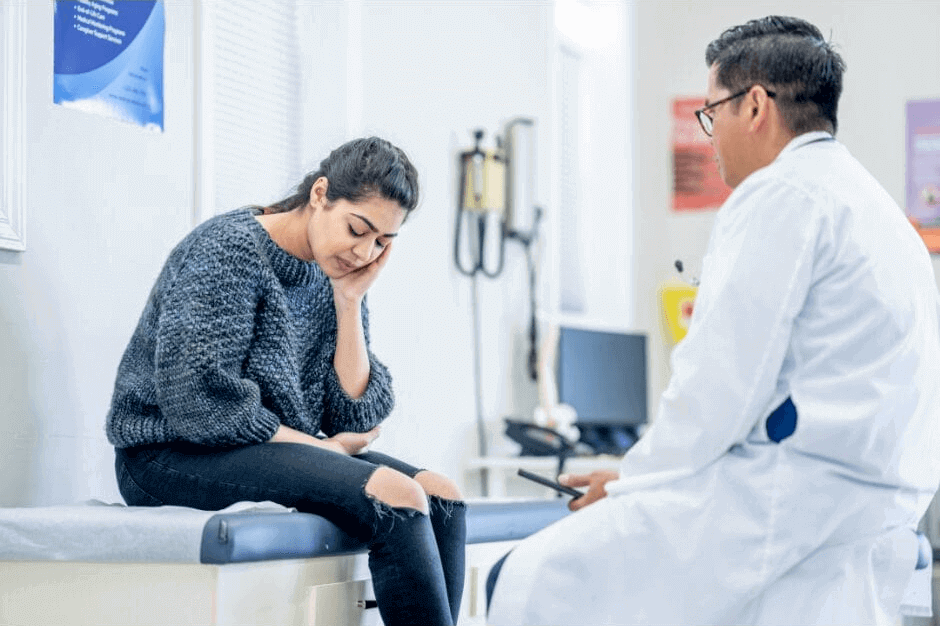
Prescription drug addiction is a growing concern that affects individuals from all walks of life. Despite being legally prescribed, these medications can lead to dependency and addiction when misused. At Keys Behavioral Health, we provide comprehensive treatment programs designed to help individuals overcome their addiction to prescription drugs and reclaim their lives. Our approach is rooted in compassion, evidence-based practices, and personalized care to support long-term recovery.
The most frequently misused prescription medications generally fall into three major groups: opioids, central nervous system (CNS) depressants, and stimulants.
Opioids—such as oxycodone (OxyContin), hydrocodone (Vicodin), and fentanyl—are prescribed to manage pain but are extremely addictive and commonly abused.
CNS depressants, like benzodiazepines such as alprazolam (Xanax) and diazepam (Valium), are used to treat conditions like anxiety and insomnia. However, they carry a high risk of dependence and can lead to dangerous withdrawal symptoms if stopped abruptly.
Stimulants, including amphetamines (Adderall) and methylphenidate (Ritalin), are typically prescribed for ADHD but are often misused for their ability to enhance focus, energy, or create a euphoric high. Abusing any of these prescription drugs can lead to serious health complications—such as respiratory failure, cardiovascular issues, and long-term cognitive damage. Understanding the dangers of prescription drug misuse is essential for preventing addiction and ensuring medications are used safely and responsibly.

Prescription drug addiction can silently develop, often beginning with a legitimate medical need and quickly spiraling into dependency. While these medications may offer temporary relief for pain, anxiety, or focus issues, long-term misuse carries devastating consequences. The effects go far beyond the high—they touch every area of life, from physical health and mental stability to relationships and legal standing. Understanding the dangers of prescription drug addiction is crucial for prevention, early intervention, and recovery.
Prescription drug addiction can inflict serious and sometimes irreversible damage on the body. Opioid misuse, for instance, can cause respiratory depression, where breathing becomes dangerously slow—raising the risk of coma or even death. When opioids or CNS depressants like benzodiazepines are mixed with alcohol or other drugs, the chances of fatal outcomes skyrocket. Over time, the liver and kidneys are placed under enormous strain, often resulting in organ damage. Opioid abuse can also weaken the immune system, leaving users more vulnerable to frequent illnesses and infections.
Stimulant abuse—such as misusing Adderall or Ritalin—poses a different set of dangers. These drugs can cause heart complications, including high blood pressure, irregular heart rhythms, and increased risk of heart attack or stroke. Many users experience rapid weight loss and nutritional deficiencies due to suppressed appetite. CNS depressants like Xanax and Valium, when misused, often lead to coordination issues, memory lapses, and dizziness—heightening the risk of accidents and injuries. Over time, continued abuse of prescription drugs can lead to neurological damage, physical dependence, and a general deterioration of health that makes recovery more difficult.
Addiction deeply affects mental and emotional well-being, often exacerbating the very conditions the drugs were meant to treat. Long-term opioid use disrupts the brain’s ability to regulate mood, leading to chronic depression, anxiety, and emotional instability. These changes stem from how opioids interfere with the production of natural chemicals like dopamine and serotonin. Without the drug, users may feel overwhelming sadness, lack of motivation, and in extreme cases, experience suicidal thoughts.
Stimulants, when abused, can result in paranoia, hallucinations, and high levels of agitation or aggression, while prolonged use of CNS depressants may cause confusion, fatigue, and emotional numbness. These cognitive effects make everyday functioning challenging, affecting memory, concentration, and judgment. Many individuals caught in addiction also battle low self-esteem, guilt, and a sense of hopelessness—emotions that fuel continued use. The psychological dependency becomes just as strong, if not stronger, than the physical addiction, creating a cycle that’s tough to escape without professional support.
The social toll of prescription drug addiction can be as severe as the physical and mental effects. As dependence grows, people often withdraw from family and friends, prioritizing drug use over relationships and responsibilities. Addictive behavior frequently involves secrecy, manipulation, and dishonesty, leading to broken trust and damaged bonds with loved ones. Financial strain from maintaining the addiction may cause further stress within households, and in extreme cases, can contribute to homelessness or family breakdown.
Professionally, addiction can be devastating. As drug use escalates, job performance declines, absenteeism increases, and workplace behavior becomes unreliable—often resulting in job loss and financial hardship. Some individuals turn to illegal methods of obtaining prescriptions, such as doctor shopping or forging prescriptions, which can lead to arrest and incarceration. The stigma surrounding addiction adds another layer of isolation, making it harder for individuals to seek help. Over time, the social isolation, legal issues, and loss of purpose that stem from prescription drug addiction can become just as destructive as the drug use itself.
Recognizing the signs of prescription drug addiction can be challenging, especially when the medications were originally prescribed for legitimate medical reasons. One of the earliest signs is using the medication more frequently or in higher doses than prescribed. Individuals may also start “doctor shopping” to get multiple prescriptions or find ways to refill medications early. Obsessive thinking about the drug, constant worry about running out, or keeping stashes hidden are also common indicators that a dependence may be forming.
Behavioral changes often accompany prescription drug addiction. People may become more secretive, withdrawn, or irritable, especially if confronted about their usage. Responsibilities at work, school, or home may be neglected, and hobbies or social activities might take a backseat to drug use. Financial issues can arise from constantly trying to obtain more pills, and some may even resort to illegal methods to maintain their supply. Mood swings, memory lapses, or periods of hyperactivity or sedation—depending on the drug—are also frequent red flags.
Physically, signs vary depending on the type of drug being misused. Opioid addiction may lead to drowsiness, slowed breathing, and constipation, while stimulant abuse often causes restlessness, insomnia, weight loss, and increased heart rate. Those abusing CNS depressants like benzodiazepines may appear unusually calm, drowsy, or uncoordinated. Over time, users may develop a noticeable tolerance—needing more of the drug to feel the same effect—and experience withdrawal symptoms like anxiety, nausea, sweating, or tremors when they attempt to stop. These symptoms point to a growing dependence that requires professional help to overcome.

Overcoming prescription drug addiction involves more than just stopping the drug—it requires a full-spectrum approach that treats both the physical dependency and the underlying psychological causes. Because addiction affects the brain, body, emotions, and behavior, professional treatment is often essential for lasting recovery. Most successful programs combine medical detox, therapy, medication-assisted treatment (MAT), and long-term aftercare, offering individuals the tools and support they need to reclaim their lives.
The detox process is the foundation of treatment, helping individuals safely remove the drug from their system while managing withdrawal symptoms. Depending on the drug and level of dependence, withdrawal can range from uncomfortable to dangerous. That’s why medically supervised detox is highly recommended.
Medical supervision ensures safety during the withdrawal phase, especially with opioids and benzodiazepines.
Gradual tapering is often used to reduce dosage slowly, minimizing severe withdrawal symptoms.
Medications may be prescribed to manage nausea, anxiety, insomnia, and cravings.
Emotional support from healthcare professionals and loved ones plays a vital role in staying committed to the detox process.
For certain types of prescription drug addiction—particularly opioids and benzodiazepines—MAT can make a significant difference in easing the recovery journey. These medications help stabilize brain function, reduce cravings, and prevent relapse.
Naltrexone helps block the euphoric effects of opioids and alcohol, reducing the reward sensation and discouraging use.
Tapering protocols for benzodiazepines allow the body to adjust slowly to lower doses, preventing dangerous withdrawal.
While no medications are FDA-approved for stimulant addiction, some doctors may prescribe antidepressants or anti-anxiety medications to ease withdrawal symptoms.
Therapy addresses the emotional and behavioral patterns that fuel addiction. A variety of counseling techniques are used to help individuals build resilience, process trauma, and develop healthy coping strategies.
Cognitive-behavioral therapy (CBT) helps people change negative thinking patterns and behaviors linked to substance use.
Dialectical behavior therapy (DBT) teaches emotional regulation and distress tolerance, helping manage triggers and cravings.
Motivational interviewing (MI) fosters internal motivation to change and reinforces commitment to sobriety.
Group therapy builds a sense of community and offers shared understanding and peer support.
Family therapy works to heal strained relationships and create a strong support network for recovery.
The intensity of treatment should match the severity of the addiction and personal circumstances.
Inpatient rehab provides 24/7 care in a structured environment—ideal for those with severe addiction or repeated relapses.
Outpatient programs allow individuals to live at home while attending therapy sessions throughout the week, suitable for those with mild to moderate addiction and strong support systems.
PHPs (Partial Hospitalization Programs) and IOPs (Intensive Outpatient Programs) offer a more intensive treatment schedule without full-time residential care, balancing flexibility and support.
True recovery extends beyond detox and rehab—it’s a lifelong process. Long-term success depends on having a personalized aftercare plan and a proactive strategy for managing triggers and setbacks.
Coping skills training helps individuals manage stress, cravings, and emotional challenges without turning to drugs.
Relapse prevention planning identifies high-risk scenarios and develops responses to avoid falling back into old habits.
Continued therapy and check-ins provide accountability and emotional support through all stages of recovery.
Staying connected with others in recovery is one of the most powerful tools for maintaining sobriety.
Narcotics Anonymous (NA) offers a spiritual, 12-step framework for personal growth, community, and accountability.
SMART Recovery and LifeRing offer secular, evidence-based alternatives for those who prefer a non-spiritual path.
Peer support fosters connection, reduces isolation, and provides practical advice from those who’ve faced similar challenges.
Successful recovery requires lifestyle changes that promote physical, emotional, and mental wellness.
Establishing a routine creates structure and balance, reducing the chaos addiction often brings.
Regular exercise and a nutritious diet support healing and mental clarity.
Stress management techniques such as meditation, journaling, yoga, or hobbies help regulate emotions and prevent relapse.
Avoiding triggers, including certain people, environments, or routines, is essential to protect recovery progress.
Treating prescription drug addiction takes time, effort, and the right combination of resources—but it is entirely possible. With a thoughtful treatment plan that includes medical care, therapy, lifestyle adjustments, and community support, individuals can overcome addiction and regain control of their lives. Recovery isn’t just about quitting—it’s about creating a healthier, more fulfilling future.

Here are just a handful of things you can expect to receive from our team:
If you or someone you love is struggling with addiction, don’t wait to get help. Contact us today for addiction treatment in Tewksbury, MA.